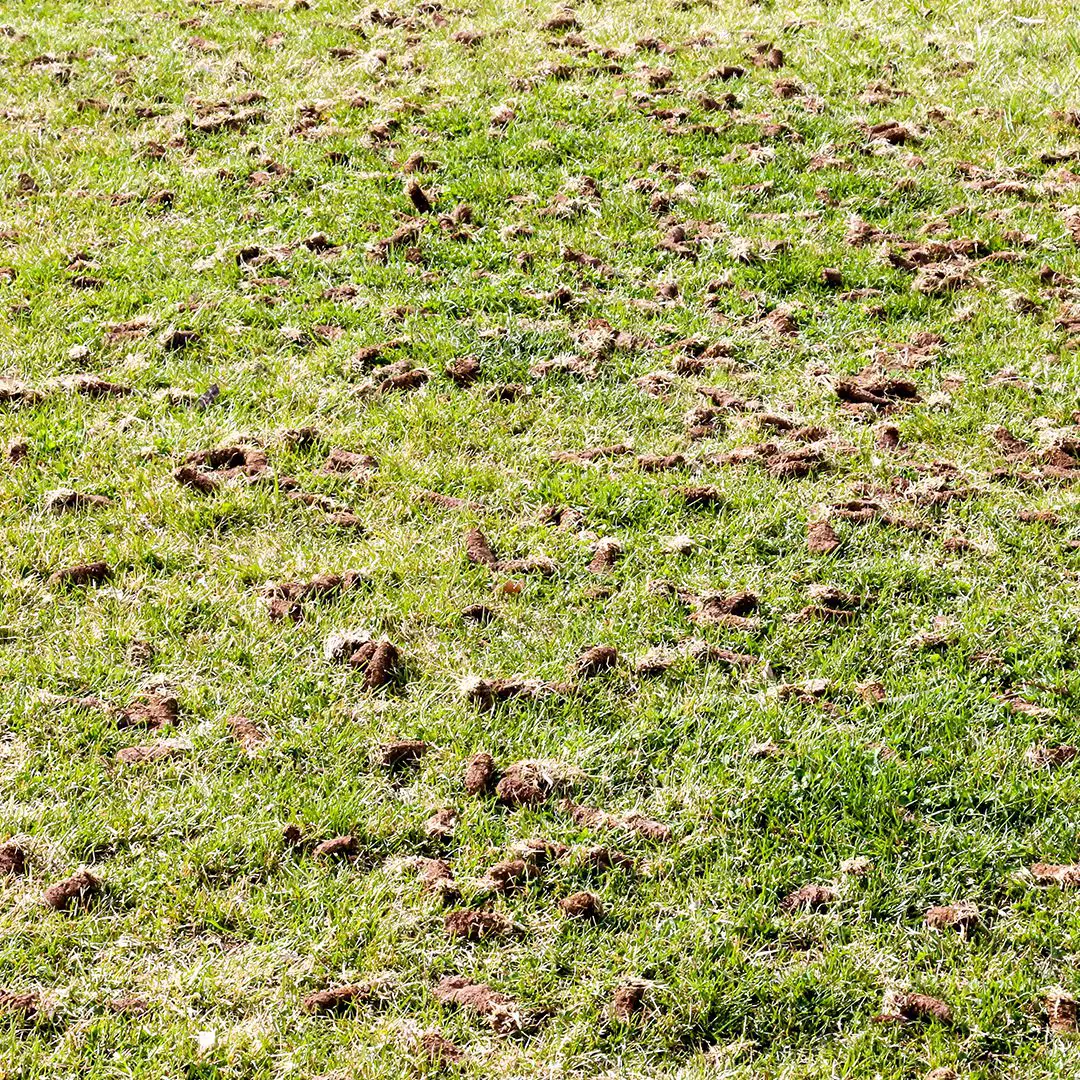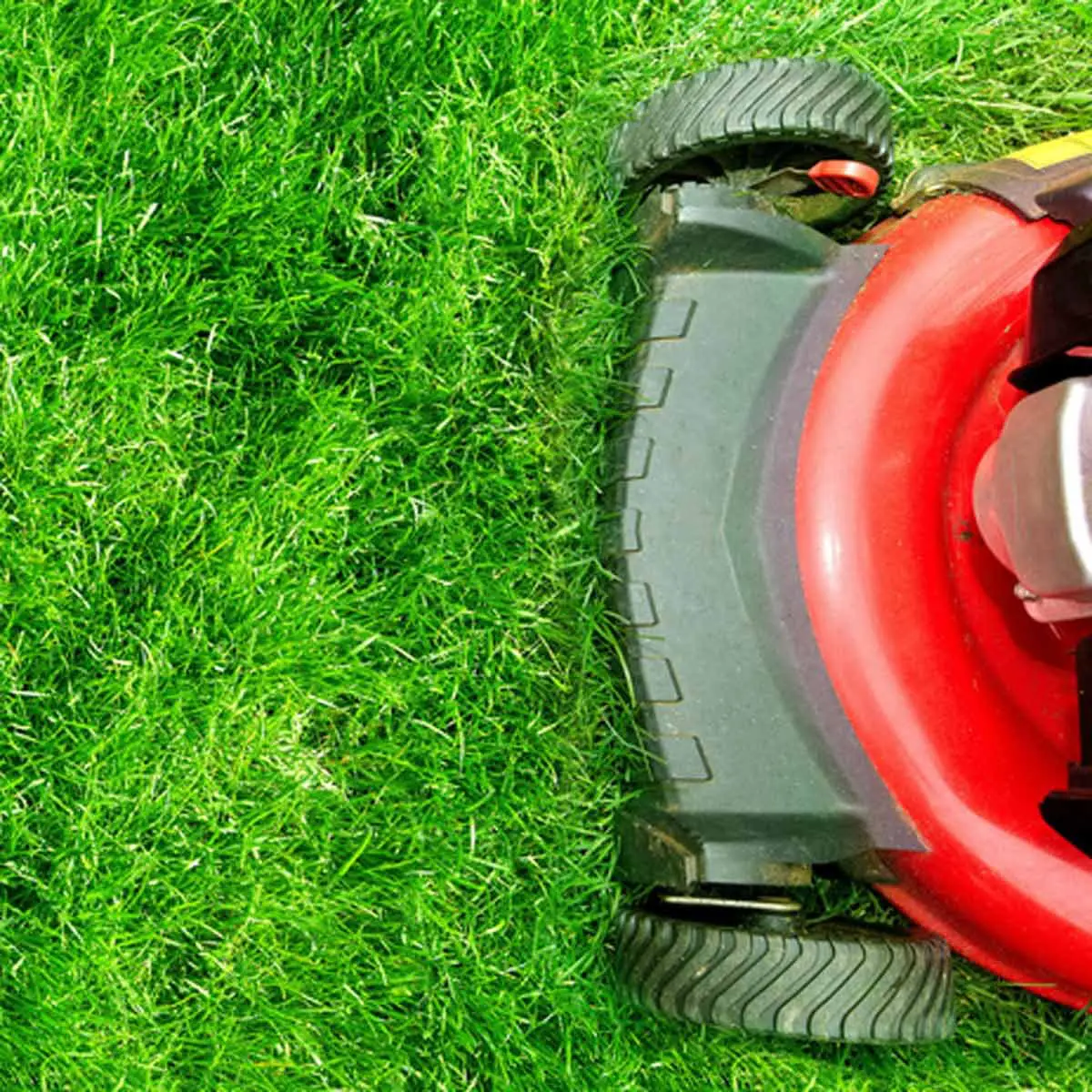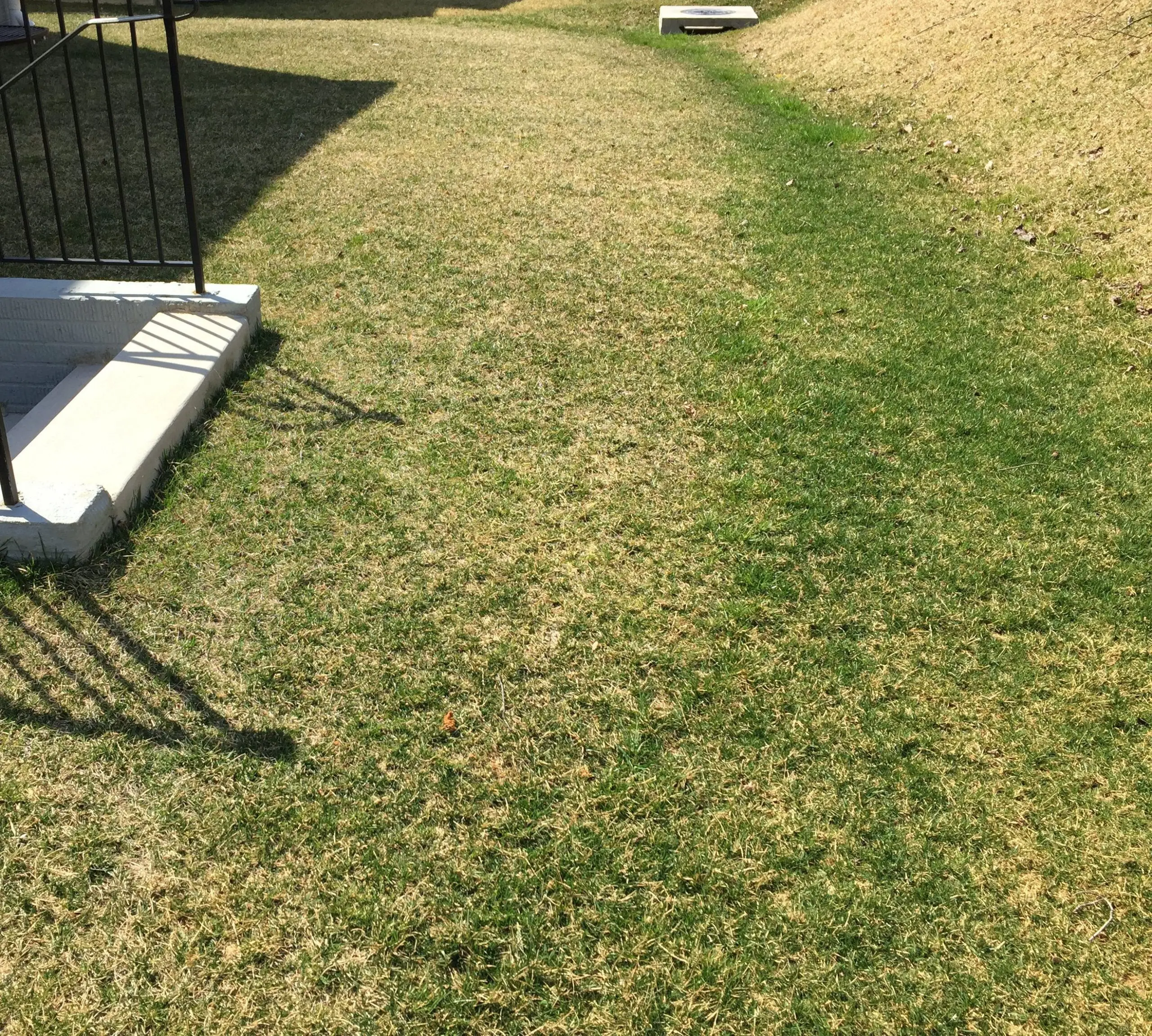Dont Fertilize Too Early In The Spring
Fertilizing too early in the spring increases shoot growth but not root growth.
Fertilizing grass too early in the spring might be problematic because it can encourage the grass to spend too much on shoot growth rather than root growth.
However, a healthy lawn needs robust and deep roots if it is to keep its green color in the long run and survive the brutality of the coming summer.
In addition, if you fertilize your lawn too soon in the spring, you will only be wasting your fertilizer. It is because your grass is still dormant, and it wont be able to absorb the nutrients in the rainwater before they run off with the next rainfall.
However, weeds may already be present in your yard, just waiting for you to fertilize them so they can outcompete your grass. The best time to fertilize in the springtime is when the daytime air temperatures are consistently in the 70s.
When Is The Best Time To Fertilize Your Lawn In Florida
A lawn is great to look at, but its a science to maintain! Our clients have a lot of questions about how to keep their lawns green and healthy and there are a lot of factors that go into what looks like a simple green carpet. Theres the grass type, the watering amount and schedule, the mowing requirements, pest problems, reseeding/replanting, and, of coursefertilizing.
We have many years of experience working with our clients to keep their lawns looking beautiful letâs talk about the best time to fertilize your Florida panhandle turfgrass.
Also Check: How Much Peat Moss For Lawn
What Is The Best Fertilizer For Hot Summer
Use Fertilizer with Low Nitrogen Content However, as weve just seen, nitrogen-rich fertilizers are best used in the early spring for greening up and growth, but in the summer they may create additional stress on lawns and even burns. Because of this, a low-nitrogen fertilizer is an excellent choice for lawns in the heat of summer.
Recommended Reading: What Fertilizer Should I Use On My Lawn In July
Change The Fertilizer Mix During The Heat Of Summer
The summer heat brings a lot of stress to a lawn. The lawn can become parched and damaged from the summer sun and the extreme heat. Although its easy to understand when a lawn loses its luster in winter months, most of us dont want the sun to shine down on a brown lawn in the summer months. Thats when its time to think about fertilizing as part of our summer lawn maintenance.
When Is It Too Cold To Fertilize Your Lawn

We may earn an affiliate commission for purchases using our links . Learn More.
Is there a best time to fertilize your lawn? Many homeowners are unsure about when it is too cold to fertilize lawns before, during, or after winter or the best way to apply the product.
Theres no need to wonder any longer, as I put all the crucial information about cold-weather lawn fertilization down below.
Read along to learn the pros and cons of winter fertilization and the best products, times, and methods to do it successfully!
What to Expect From This Article
Don’t Miss: What Is The Best Lawn Edger To Buy
Dont Fertilize A Vulnerable Lawn
You should never apply a nitrogen-rich fertilizer to a dormant lawn. Applying fertilizer when it is too cold and your lawn is not yet growing will only encourage any weeds to grow and take over.
If there is a drought, you might want to avoid fertilizing your lawn until its over. This is because when you apply fertilizer youll need to water your lawn several times to make sure those nutrients get into the soil .
If the fertilizer is left sitting on top of the grass blades for too long, you could end up with burned grass blades.
How Often You Should Apply Fertilizer To Your Lawn
Though fertilizer has its benefits, you dont want to overdo it. A full feeding is recommended at least 5-6 times per year. You want to feed your lawn when its growing most rapidly. However, you should base the frequency on your climate and the type of grass you have. For example, cool season grasses can be fertilized in late spring, but only if necessary.
Warm season grasses, like Bermuda grass, St. Augustine, zoysia, centipede and buffalo grass, should be fertilized in spring. Depending on the amount of water your grass gets, aim to reapply your fertilizer every 6-8 weeks. Keep a watchful eye on your grass. If it looks thick and green, you can probably skip the feeding. If its starting to look brown or black, give your lawn some TLC.
Don’t Miss: How To Use Quickbooks For Lawn Care
Fertilizing Different Types Of Grass In Cold
When fertilizing your lawn, the lowest temperature at which you safely apply the fertilizer to your lawn will also be determined by the type of grass. Lawns are made of either warm-season grasses or cool-season grasses, and each type has different fertilizer needs. Warm-season grasses are more active in the late spring and early summer.
On the other hand, cool-season grasses go dormant in late spring as the air and soil temperature rises. And if youre thinking about what temperature is too cold to feed your lawn grass, chances are you have cool-season grass.
Nevertheless, here is what you need to know about fertilizing or feeding warm-season and cool-season grasses in the cold months of the winter.
Early Morning Or Evening Mowing Times
Mowing when its cooler out is a given for the majority of us. Mowing early is not only for golf course maintenance crews. Who wants to sweat it out in the middle of scorching heat? But there are also benefits to your lawn by not mowing in the middle of the day.
Mowing between 9am-11am and 5pm-7pm are the ideal times for mowing your grass. By mowing at these times your turf is at its strongest during the summer days, meaning that it can take the clipping and keep on ticking, so to speak. By hacking in the heat you are putting too much stress on the grass which could eventually lead to grass disease and other issues.
You May Like: How To Take Care Of Weeds In Lawn
Tip #: Refrain From Cutting Grass Too Short
One common mistake made by both homeowners and commercial landscape maintenance companies is cutting a lawn too short. If a lawn is cut too short, it reduces the plants ability to produce energy for growth. When cut at the proper height, however, grass develops stronger roots that support more vigorous plants that are more tolerant of stress.
Keep in mind that different varieties of grass have different growth habits that directly relate to mowing heights. For example, cool-season grass and warm season grass types require somewhat different maintenance techniques and recommended cutting heights.
Tip #2: Remember the One-Third Rule
When deciding on the correct height to cut your grass, it is important to also remember the one-third rule: never remove more than one-third of the grass height at one time. By doing so, the lawn is kept cooler because less plant tissue is removed.
In fact, cool season grass types actually benefit in the heat of the summer by setting the blade higher. If a lawn is normally cut at 2.5 inches, for example, increasing it to 3 inches in the heat of summer will come with many benefits.
Ideal Time To Fertilize
When applied incorrectly, fertilizers can burn grass plants, so its important to take air temperatures and weather into consideration when deciding when to fertilize your lawn. If air temperatures are too hot, plant damage can occur.
Quick-release and slow-release granular fertilizers require you to water the lawn after application. Applying fertilizer in the afternoon will cause the moisture in the soil that is preventing the lawn from burning to evaporate as the sun beats down on the lawn.
Its also important for grass to dry out slightly before the nighttime temperatures. If you fertilize and water too late in the day and the lawn is still wet when the cool night temperatures arrive, it will become more susceptible to contracting a fungal disease.
Fertilizing your lawn in the morning enables you to take advantage of cooler temperatures and morning dew to reduce the risk of burning the grass. As you spread the fertilizer and water it in, the nutrients will have the best chance of reaching the roots and being absorbed quickly.
When your lawn and soil are in harmony, there will be a natural balance that protects your lawn against most insects, weeds, and turf diseases and improves the heat and cold tolerance of your grass. The soil will become more permeable and alive with beneficial microbial organisms, allowing water, air, and grass roots to penetrate into the soil more deeply and establish a better foundation for the grass to flourish.
Don’t Miss: How To Price Commercial Lawn Care
Should You Fertilize Or Seed First In The Fall
Is it possible to apply thefertilizer before seeding. The best time to plant a lawn is during the spring and fall. The amount of fertilizer you need depends on the type of lawn you want to grow. For example, if you are growing a grass lawn, you will need more fertilizer than if your lawn is a shrub or herb garden.
You will also need less fertilizer if the soil is sandy or clay-rich. Do not use more than 3 cups per acre. You should use a soil mix that is at least 3/4 to 1 inch in depth and 1 to 2 inches in width. The mix should be well-drained, but not soggy.
Best Time To Fertilize Lawn Grass

Common warm-season grasses in the US include Bermuda, St. Augustine, and Zoysia grasses. These grasses are adaptable to the lawns in USDA Hardiness zones 5 through 10. Whereas further categorization fits Zoysia spp in the hardiness zones 5 to 10, Bermuda or Cynodon spp best adaptable to zones 7 through 10, and St. Augustine to USDA hardiness zones 8 to 10, need fertilization starting from the mid to end of April, June, September, and late October. Every fertilizer application is grass condition dependent and needs to be given during the active growth period. The color of grass may be used as a strong base to determine the growth. Lush-green color is a clear indication that the lawn is growing at its full potential and could utilize the fertilizer dose fully to increase its biomass. If the color of the grass starts fading, it means the time of proper fertilizing is over.
Read Also: Can You Spray Your Lawn For Ticks
Myth : Fertilize Each Month
Less is more when is comes to fertilizer in most cases. Its much more important to focus on high quality fertilizer rather than how many times you apply it. At the end of the day your aim is to have the healthiest lawn by using the least amount of fertilizer and herbicide. This is possible, as long as you carefully follow the recommendations of this article. Our lawns go through stages:
Growth mode: Your lawn wants to grow while the temperatures are warm, but not scorching and the soil moisture is quite abundant.
Survival Mode: During survival mode temperatures are consistently 25C to 35C and rain is minimal. This makes the soil very dry, and your lawns number one priority is to retain moisture and nutrients.
With these stages in mind, fertilizer must be designed to feed the lawn when it wants to grow and protect the lawn when it wants to preserve nutrients.
Lawn fertilizer consists of three nutrients: Nitrogen , Phosphorus and Potassium .
With this information determined, we can establish your fertilizer program for the season:
Follow the instruction on your fertilizer bag to determine how many days between each application you should follow. As a residential homeowner, use the right fertilizer during the appropriate season.
Apply Fertilize Based On Instructions
Always carefully read the label and instructions on the lawn fertilizer that you buy. You need to know how long it will last, when you will need to re-apply fertilizer, and how much fertilizer to spread per square foot.
If you go with a granular, slow-release fertilizer, it will slowly provide your lawn with the nutrients it needs over a period of time. Time periods can range from two to eight months. This kind of fertilizer does not need to be spread in your yard as often as a quick-release, synthetic fertilizer .
Make sure you dont over-fertilize your lawn as you may do more harm than good.
Don’t Miss: What To Look For In Riding Lawn Mower
Picking The Right Fertilizer
Picking the right fertilizer depends on your lawn type and your end goal is. If you want to make your lawn greener and healthier, a product like The Andersons 16-0-8 Fertilizer with Humic DG is great for you. It contains methylene-urea that will give your lawn an even feed over eight to 10 weeks. Its also safe for pets.
How Do I Know Which Spreader Setting To Use
There are several easy ways to help you figure out the right spreader setting. Try one of these:
Visit the product information page for your particular fertilizer on Scotts.com and look for the guidelines in the Spreader Settings under the Learn tab
Or, read the spreader settings guidelines on the product package.
Also Check: How To Sow Grass Seed On Existing Lawn
Read Also: How Do I Kill Weeds In My Lawn
Advantages Of Winter Lawn Fertilization
- Promotes healthy root development so the grass can regrow vigorously after the dormant stage
- A deeper and more expansive root system increases the drought and disease resistance of the grass during the summer months
- Fall fertilization gives the grass a nutritional boost so it can repair any damage from summer wear and tear
- Helps thicken the lawn and fill in bare patches
Tips For Caring For Your Lawn In Extreme Summer Heat
Alex K.Affiliate Disclaimer: My content may contain links to products I use and love. As an Amazon Associate and participant in various other affiliate programs, I earn a small commission at no extra cost to you from qualifying purchases. I only recommend products I personally vetted!
No one likes the outdoors when temperatures are over 90 degrees here in the states. Well, no one in their right mind in my opinion. For me personally, once the temperature gauge tips over 90 then I get a bit grumpier, especially when it comes to doing my yard work.
Typically, Ill wait until after 5 pm to do most of the work to avoid the direct sunlight. Now when it comes to your grass, that can get stressed as well, so here are my best tips to give your lawn what it needs during extreme heat.
Read Also: Where To Buy John Deere Lawn Mower Parts
How Often Should I Fertilize My Lawn
Having a healthy lawn can seem deceptively simple. After all, grass only needs water and fertilizer, right? So how hard could it be? If youve been wondering, How often should I fertilize my lawn? youre in the right place.
Learning how often to fertilize a lawn is an important step towards having the best-kept lawn on the block.
In most cases, fertilizing your lawn should not be done frequently.
Most lawns should only be fertilized up to two times per year. How often your lawn specifically needs fertilizer depends on what type of grass grows on it, among other factors. Keep reading to learn what you need to know about planning your lawn fertilizing schedule.
You May Like: What Is The Best All Wheel Drive Lawn Mower
How Do I Know When To Stop Fertilizing My Lawn

After keeping your lawn fertilized for the summer and fall, its time to put your lawn to bed before the winter frost arrives. You can do this by adding a layer of fertilizer to any damaged spots in the early fall to promote growth in the poorly growing areas.
When you fertilize the lawn, it produces chlorophyll in the grass, and the grass gets nice and full of sugar before winter comes. The extra chlorophyll makes it harder for the grass to freeze entirely, and it will likely stay green all winter long. You can also do another application to the entire yard in mid-October to ensure that it can survive the harsh winter temperatures.
Also Check: What Is The Best Used Riding Lawn Mower
How Often To Fertilize Lawn
Over-fertilizing is a thing. If once a year is right for your lawn, stick with that and dont get carried away. Fertilizer can be a valuable tool to keep a lawn healthy, dense and looking great, but it can also create environmental concerns if not used responsibly. Follow the label instructions on your fertilizer as each product has unique specifications and needs.
Combinations Of Cool And Warm
Homeowners in transitional zones that have wide temperature swings throughout the season may have grass that is a combination of cool-season and warm-season grass types.
If this is the case for you, you will have to do different kinds of care at different times of the year, and your lawn care schedule may be more complex and challenging.
Different grass mixtures have different peak growth seasons. Youll need to find out what your grasss peak season is depending on your seed mixture.
Recommended Reading: How Often Should You Water Your Lawn